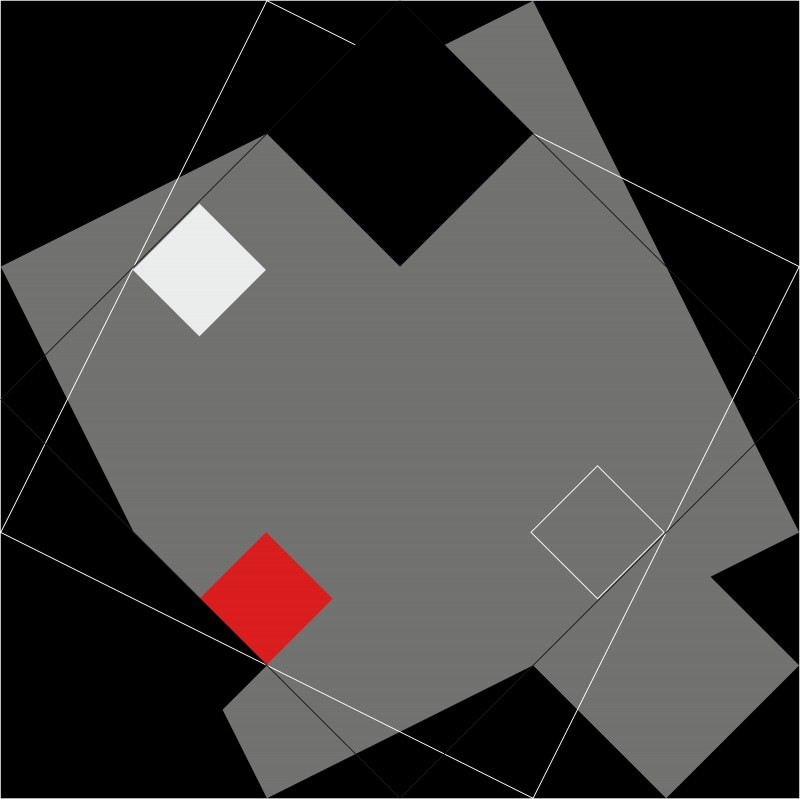“What is next to nothing from the perspective of human or world history, for an individual it is a significant period of time intheir life and work. History is usually created by regularity, while people’s lives and their destinies are often determined by chance.
One distant summer, 1984, Polish and Lithuanian artists met and befriended in a plein air in a place known as GDR city of Magdeburg back then.
This is how I met A. Olszewski, an artist from Radom, without even anticipating at that time that this friendship will accompany me for the rest of my life.
Many years have passed. After Lithuania regained its independence, it became possible to create your own future. Knowing that in those difficult years of 1993 I was assigned to lead the Kaunas Art Institute of that time, A. Olszewski offered me to initiate the cooperation between us – Kaunas and Radom institutions. That’s how it all started…“
Edmundas Saladžius
„Aleksander Olszewski builds his work from two foundations of contemporary abstraction: geometryand expression. Artist chooses geometry and builds his own vision of modernity onthis basis. At its basis we also find references to Platonic terms of cognition of reality – i.e. episteme, which is a kind of glare, cognition of the unknowable, and – dianoia, which is an ability of analytical thinking and logical deduction. Thus, on the one hand, the source of Olszewski’s work is “thinkingeyes”. Thinking determined by the shape of objects, colors, movement, seeing the relationship between objects and people, on the other hand – strict rules of mathematics and logical thinking. Thus, one can assume that intellect and feeling are complementary, complementary states of theartist’s consciousness, and together they lead us to the borderline of sense in our works. An attemptto describe the evolution of the output by Aleksander Olszewski will be a wandering tour ofsubsequent works: From the idea – to its materialization, from striving for the autonomy of a work of art – to questions about the role of mathematics and logic in constructing artistic expression with theemphasis on the continuity of transformations leading from simple geometric systems – to thevisualization of space, through clean, without any references to reality relations of geometric forms,while maintaining the proper activities of the artist of intellectual discipline.“
Tamara Książek
Aleksander Olszewski was born 27.02.1944 in Radom (PL). He studied at the State Higher School of Visual Arts in Łódź and got Diploma in the studio of Lech Kunki. He is a professor and dean of the Faculty of Art at the University of Technology and Humanities in Radom. Professor at UTH Radom. Former Dean of the Faculty of Art. He practises painting, computer graphics. 40 individual exhibitions and 400 group exhibitions in Poland and abroad. Founder of ‘Rogatka‘ Academic Art Gallery in Radom. Editor of the year book ‘Arteria‘ of the Faculty of Art at the University of Technology and Humanities.
„Edmundas Saladžius is a master of “nocturne” graphics. The artist feels safe in the dark – bothphysical and metaphysical. The physical darkness of Saladžius’ graphics is so deep that three-dimensional figures hardly find a place in it. Therefore, they have to be flattened or only outlines areleft of them. We have an irresistible impression that the artist does not introduce his characters intoa dense mass of darkness himself, but sneaks past them with the awareness that they must be there. His task is only to mark their presence: he does so using the following means – Colour and light. Speaking of colour, one should refer to a surprising discovery made by Saladžius – we all know thatcolour does not exist without light: the colourful parts of his characters (usually red) shine with coloureven in the darkest black. It is particularly impressive to draw the contours of his characters with “neon” light. In the presented drawings we always see the mutual penetration of drama andunfinished story. This combination causes that this darkness looking at the viewer is, on the one hand,and on the other hand, is not able to destroy him.“
Alfonsas Adriuškevičius
Edmundas Saladžius was born 16.06.1950 in Kaunas (LT). He graduated in 1974 from the Vilnius State Institute of Fine Arts, Faculty of Applied Graphic Arts. He is a professor and was a rector at Vilnius Academy of Fine Arts, Kaunas faculty. He works with graphics, posters, book graphics and actively participates in art exhibitions in Lithuania and abroad.
Exhibition supported by the Lithuanian Council for Culture and the Lithuanian Artists’ Association.
Gallery name: Meno Parkas Gallery
Address: Rotušės a. 27, Kaunas
Opening hours: Tue-Fri 11:00 - 18:30, Sat 11:00 - 16:00
Open: 11.06.2020 - 05.07.2020







